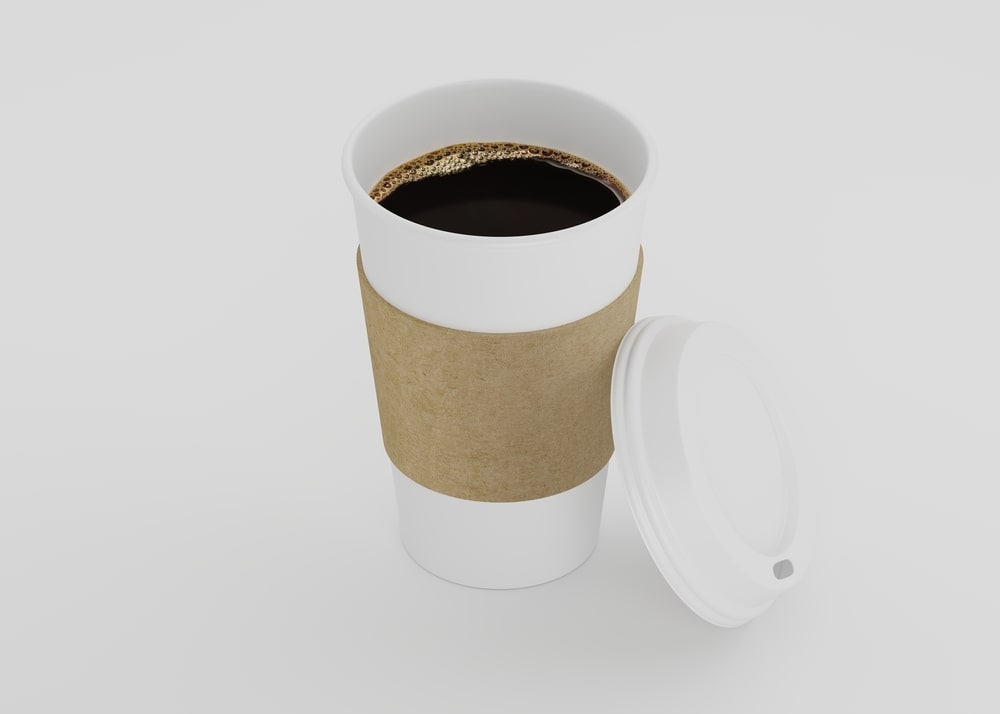We now admit the existence and the popularity of styrofoam in the food and drink industry when we regularly see and consume the beverages contained in styrofoam cups in fast food restaurants; or even when we are at home ordering meals in styrofoam boxes or bowls, microwaving them to get the food hot. Styrofoam seems to be a favorite material to make packaging.

However, there still exists a controversial argument among coffee lovers about whether using this material to contain hot coffee or any other hot liquids can raise the chance of negative effects on health to happen. To find out more about this inquiry, let’s solve the question “Can you put hot coffee in a styrofoam cup?” within this article.
What is a styrofoam cup like?
The material to make styrofoam cups is styrofoam. Styrofoam is produced from styrene, which is a petroleum-based chemical. How is styrofoam made? Styrene is refined into polystyrene by polymerization, and a hydrofluorocarbon agent is subsequently added.
Despite the fact that Styrofoam is a petroleum-based substance containing toxic compounds such as styrene and benzene, it is nevertheless widely utilized in a variety of products. The most common items made from styrofoam are the production of packaging or lab equipment. A well-known bakery and beverage brand which is Dunkin Donuts is using styrofoam to contain their coffee as well as other drinks.
The reason why styrofoam is used for packaging is because of its amazing characteristics. It is extremely lightweight, a great shock absorber, and an effective insulator. Styrofoam is also thermoplastic, which means that at a specific temperature, it transforms from a liquid to a solid.
Do styrofoam coffee cups harm health?
Basically, styrofoam cups are cheaper and easier to produce than other safe materials like glass, ceramic, stainless steel, etc because glass and ceramic are more time-consuming and expensive to manufacture. Furthermore, cups made of these materials are not the ideal things to be served as takeaway drinks while the styrofoam cup provides enough insulation, allowing hot liquids to remain hot for extended periods of time and of course easy to bring away.
Although styrofoam is material for food packaging, scientists have warned people not to consume food contained in styrofoam things. Why does this material become a dangerous threat to humans?
Carcinogens and chemicals are found in styrofoam due to the report from the International Agency on Research on Cancer and the Environmental Protection Agency. These hazardous substances are believed to cause cancers such as breast and prostate if there has been long-term use of styrofoam (polystyrene) in food boxes, containers, and cups. Moreover, styrene can simulate the qualities of the female hormone estrogen, leading to thyroid issues as well as menstruation abnormalities, among other health issues like fatigue, headache, depression, and renal problems.
The ban on the use of styrofoam for hot foods and drinks is now available in some states of the United States, for example, San Francisco, Seattle, and Portland. Even many nations in the world including the United States, Canada, France, the Philippines, and Taiwan, have so banned its commercial use due to environmental and health damage.
Can you put hot coffee in a styrofoam cup?
Back to the first main question of the topic “Can you put hot coffee in a styrofoam cup?”. The answer seems to be “Yes, you can” due to its amazing characteristics to be the ideal type of packaging, even when containing hot liquid like coffee. This material is not easy to melt under hot water but if you heat it or microwave it many times, it will. However, we have now looked through another factor that plays an important role, which is health insecurity.
You primarily can put hot coffee in a styrofoam cup but you are suggested not to do that.

If the cold liquid is in a styrofoam cup it is not going to be as dangerous as you heated it. Hot foods and drinks have been shown to increase the ability of styrene to transfer more rapidly into our body. When you contain hot coffee in styrofoam, the styrofoam becomes a neurotoxin which actually is able to damage neurons in the brain. Plus it affects the respiratory system and if it is inhaled in case you want to see whether it is not enough, you are inbreathing the fumes which are extremely toxic. These fumes can lead to the asthma flu like symptoms muffle aches and pain much similar to having flu or a fibromyalgia type.
In fact, people often drink coffee from a styrofoam cup, it is not good for your health to do so on a regular basis, especially when it is hot. Any food packaging, whether plastic, paper, glass, or other, includes chemicals that can “migrate” to food or liquids at very small levels. Tiny quantities of styrene may remain after manufacturing in the case of polystyrene, and it is this material that may migrate. Styrene can drain from cups and containers into hot foods and beverages, as well as leach into alcohol and high-fat drinks and foodstuffs. As a result, styrene and other additives in polystyrene goods move into food, which rises substantially in boiling liquids.
Although each dose may appear in very small quantities, consider the cumulative effect. Therefore, consumers drinking hot coffee or any hot beverages from styrofoam cups about four times a day for three years and more will likely have consumed approximately one foam cup’s worth of styrene.
To conclude, we should limit or totally avoid drinking hot coffee or any kind of beverages and foods in styrofoam cups, bowls, boxes, plates, etc to ensure our long-term health condition. Instead of styrofoam, there is other solution as alternatives that are worth using, such as cycled paper which is safer for both health and the environment.
